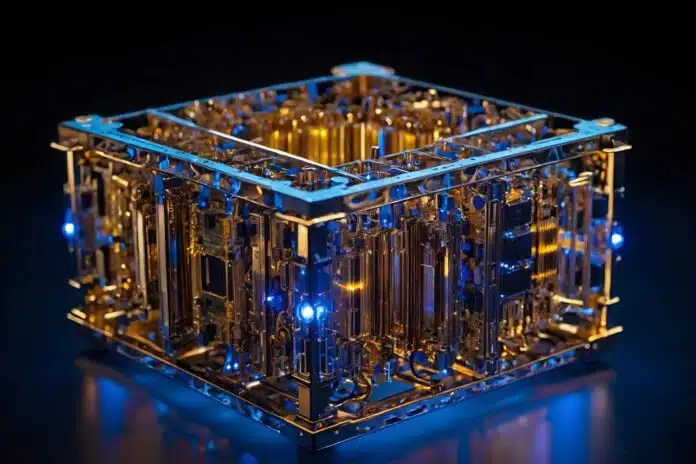
By Amit Malewar 17 Oct, 2024
Collected at: https://www.techexplorist.com/world-first-superconducting-flux-qubit-functions-zero-magnetic-field/91285/
Quantum computers are expected to be very important in material and drug development and information security. Superconducting qubits are a crucial technology because they can be controlled more easily. The Josephson junction is a critical part of these qubits, which helps them work by allowing different energy levels.
Transmon qubits are popular but have a problem called low anharmonicity, making it hard to fit many qubits together without interference. On the other hand, flux qubits use three Josephson junctions and have higher anharmonicity, which helps avoid this interference issue. However, flux qubits need special coils to work correctly, which can create noise and require more control lines, making it harder to scale up the technology.
The National Institute of Information and Communications Technology (NICT), NTT Corporation, Tohoku University, and the Tokai National Higher Education and Research System Nagoya University have successfully developed a new kind of superconducting flux qubit that works in a zero magnetic field. This advancement could help improve the performance and integration of quantum computers.
The newly developed superconducting flux qubit uses a ferromagnetic Josephson junction (named π-junction). The new π-junction uses a particular type of Josephson junction that creates a 180-degree (π) phase difference without needing external magnetic fields.
This means the qubit can operate optimally independently. As a result, it is expected to reduce external noise, simplify the circuit, and make it easier to integrate multiple qubits together.

In this study, researchers combined NICT’s nitride superconducting qubit technology, which uses niobium nitride (NbN) on silicon, with ferromagnetic Josephson device technology to create a flux qubit featuring a π-junction. They successfully showed that this π-junction qubit can operate optimally at zero magnetic field and explored its coherence properties.
Previous research by Prof. Alexey Ustinov’s team in Germany achieved a coherence time of 4 nanoseconds in phase qubits with different types of junctions but struggled to demonstrate coherent operation in flux qubits with a π-junction.
In this new study, the researchers used palladium nickel (PdNi) instead of copper-nickel (CuNi) to create a more stable π-junction on an NbN electrode. They also combined NICT’s NbN/AlN/NbN junction technology with NTT’s advanced design for flux qubits in 3D cavity resonators.
Measurements confirmed that the new π-junction qubit operates best at zero magnetic fields, achieving a coherence time of 1.45 microseconds, 360 times better than previous phase qubits with π-junctions. However, conventional flux qubits without a π-junction had a longer energy relaxation time of 16 microseconds, suggesting that the new NbN/PdNi/NbN structure may negatively affect quantum coherence.

This achievement marks the first successful creation of a flux qubit that operates without an external magnetic field and has a microsecond-level coherence time. While improvements in quantum coherence are still needed, this technology is a vital step toward miniaturizing and integrating quantum circuits. Removing the need for an external magnetic field simplifies designs, saves energy, and lowers costs.
The authors noted, “Looking ahead, we aim to optimize the circuit structure and fabrication process to extend the coherence time further and improve the uniformity of device characteristics, with an eye toward future large-scale integration. Our goal is to develop a new quantum hardware platform that could surpass conventional aluminum-based qubits’ performance.”
“By improving the materials and structure of the ferromagnetic junction, we hope to develop a π-junction flux qubit with longer coherence time that can operate in zero magnetic fields. Such advancements could make it a critical component in various quantum technologies, including quantum computer chips.”

Journal Reference:
- Kim, S., Abdurakhimov, L.V., Pham, D. et al. Superconducting flux qubit with ferromagnetic Josephson π-junction operating at zero magnetic field. Commun Mater 5, 216 (2024). DOI: 10.1038/s43246-024-00659-1

Leave a Reply